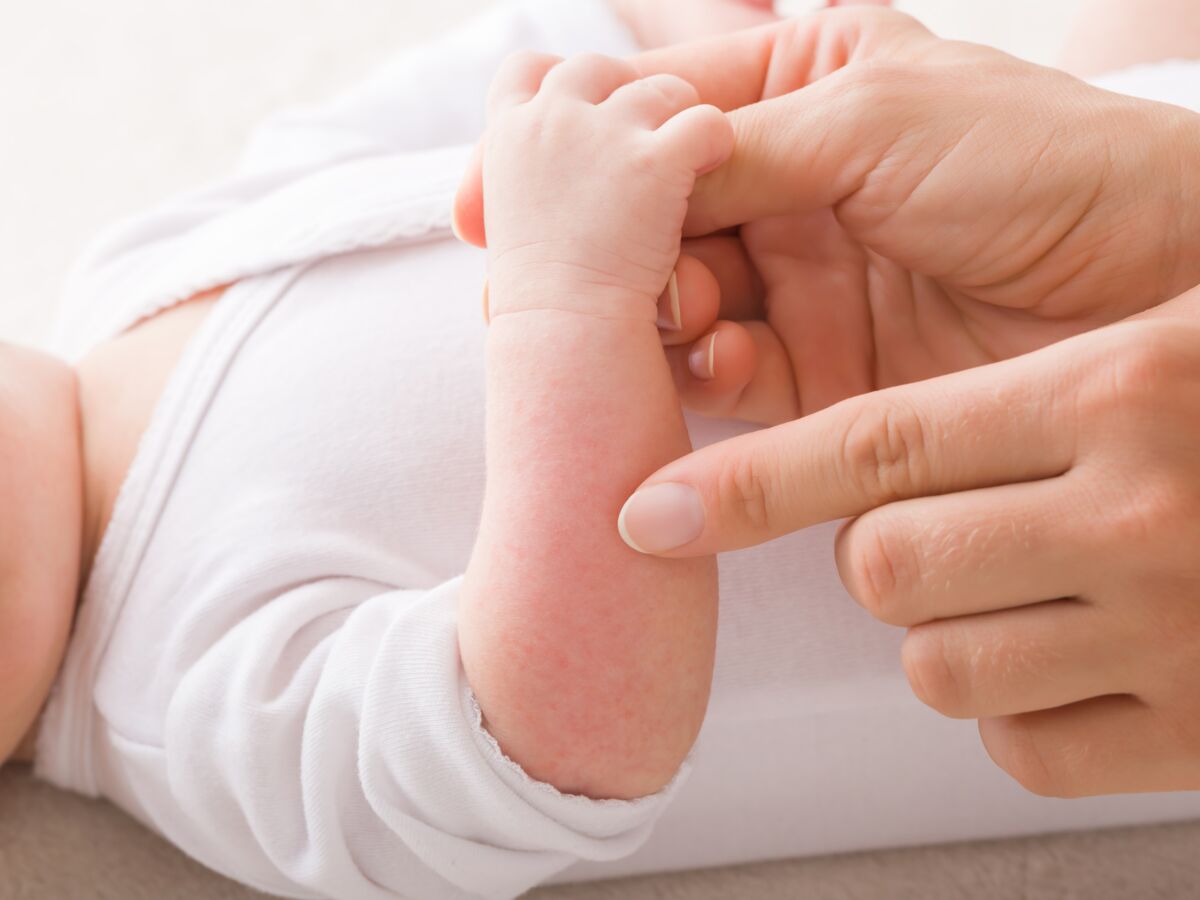Red rash in between fingers. Dyshidrotic Eczema: Causes, Symptoms, and Treatment of Red Rash Between Fingers
What are the symptoms of dyshidrotic eczema. How is dyshidrotic eczema diagnosed. What causes red rashes between fingers. How can dyshidrotic eczema be treated and prevented.
Understanding Dyshidrotic Eczema: A Common Cause of Red Rash Between Fingers
Dyshidrotic eczema, also known as pompholyx or vesicular hand dermatitis, is a specific type of eczema that causes small, itchy blisters to form on the palms of the hands and sides of the fingers. This condition can be particularly troublesome when it manifests as a red rash between the fingers, causing discomfort and affecting daily activities.
While dyshidrotic eczema is just one of many potential causes of hand rashes, its distinctive characteristics make it an important condition to understand for those experiencing persistent skin issues on their hands.
Recognizing the Symptoms of Dyshidrotic Eczema
Identifying dyshidrotic eczema can be crucial for proper treatment. The primary symptoms include:
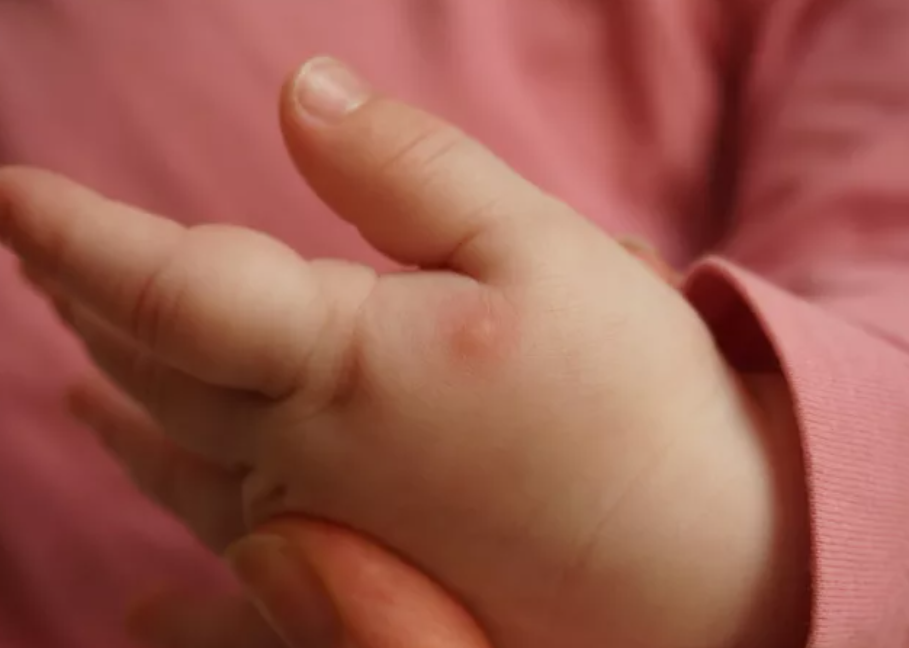
- Small, fluid-filled blisters on the palms, sides of fingers, and sometimes on the soles of feet
- Intense itching and burning sensation
- Redness and inflammation around the blisters
- Scaling and peeling as blisters heal
- Possible cracking or fissures in severe cases
Can dyshidrotic eczema affect other parts of the body? While this condition primarily targets the hands and feet, in some cases, it may spread to other areas, particularly if scratching leads to infection.
Exploring the Causes and Triggers of Dyshidrotic Eczema
The exact cause of dyshidrotic eczema remains unclear, but several factors have been identified as potential triggers:
- Stress: Emotional stress is a common trigger for flare-ups
- Allergies: Contact with allergens may provoke an outbreak
- Moisture: Excessive sweating or prolonged water exposure can exacerbate symptoms
- Nickel sensitivity: Some individuals with nickel allergies may be more prone to dyshidrotic eczema
- Fungal infections: Certain fungal infections may trigger or worsen the condition
Is dyshidrotic eczema hereditary? While there is no direct genetic link, individuals with a family history of eczema or other atopic conditions may be at higher risk of developing dyshidrotic eczema.

Diagnosing Dyshidrotic Eczema: When to Consult a Healthcare Professional
Diagnosing dyshidrotic eczema typically involves a thorough examination of the affected areas and a review of the patient’s medical history. In some cases, additional tests may be necessary to rule out other conditions or identify potential triggers.
When should you see a doctor for a hand rash? It’s advisable to consult a healthcare professional if you experience:
- Persistent or recurring rashes that don’t respond to over-the-counter treatments
- Signs of infection, such as increased redness, warmth, or pus
- Severe pain or discomfort that interferes with daily activities
- Rashes accompanied by other systemic symptoms like fever or fatigue
Differential Diagnosis: Other Conditions That Mimic Dyshidrotic Eczema
Several skin conditions can present similarly to dyshidrotic eczema, including:
- Contact dermatitis
- Palmoplantar pustulosis
- Fungal infections
- Allergic reactions
A dermatologist can help differentiate between these conditions and provide an accurate diagnosis.

Effective Treatment Strategies for Dyshidrotic Eczema
Managing dyshidrotic eczema often requires a multi-faceted approach. Treatment options may include:
- Topical corticosteroids to reduce inflammation and itching
- Emollients and moisturizers to keep the skin hydrated
- Antihistamines to alleviate itching
- Phototherapy for severe or persistent cases
- Oral medications such as immunosuppressants for refractory cases
How long does it take for dyshidrotic eczema to heal? With proper treatment, mild cases may improve within a few weeks. However, more severe or chronic cases may require ongoing management.
Natural Remedies and Lifestyle Changes to Support Treatment
In addition to medical treatments, several natural remedies and lifestyle modifications may help manage dyshidrotic eczema:
- Applying cool compresses to affected areas
- Using gentle, fragrance-free soaps and moisturizers
- Avoiding known triggers and allergens
- Practicing stress-reduction techniques like meditation or yoga
- Maintaining a balanced diet rich in anti-inflammatory foods
Preventing Flare-Ups: Strategies for Long-Term Management
While it may not be possible to prevent all flare-ups of dyshidrotic eczema, several strategies can help reduce their frequency and severity:
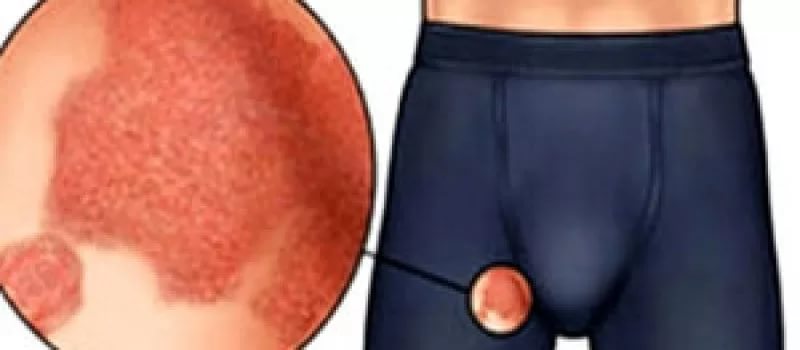
- Identify and avoid triggers
- Maintain good hand hygiene without over-washing
- Use gloves when working with water or irritants
- Keep skin moisturized
- Manage stress through relaxation techniques
Can dyshidrotic eczema be cured permanently? While there is no permanent cure for dyshidrotic eczema, proper management can significantly reduce symptoms and improve quality of life.
Dyshidrotic Eczema vs. Other Hand Rashes: Key Differences
Understanding the distinctions between dyshidrotic eczema and other common hand rashes is crucial for proper diagnosis and treatment. Here’s a comparison of dyshidrotic eczema with other conditions that may cause red rashes between fingers:
Contact Dermatitis
Contact dermatitis is a common cause of hand rashes, often resulting from exposure to irritants or allergens. Unlike dyshidrotic eczema, contact dermatitis:
- Typically appears where the skin has directly contacted the irritant
- May cause more widespread redness and swelling
- Often resolves quickly once the irritant is removed
Psoriasis
Psoriasis is an autoimmune condition that can affect the hands. Compared to dyshidrotic eczema, psoriasis:

- Causes thicker, silvery-scaled plaques
- May affect the nails more significantly
- Often occurs in other areas of the body simultaneously
Fungal Infections
Fungal infections like tinea manuum can mimic dyshidrotic eczema. However, fungal infections typically:
- Cause a more defined border to the rash
- May have a scaly appearance
- Often respond to antifungal treatments
How can you distinguish dyshidrotic eczema from other hand rashes? While the presence of small, intensely itchy blisters is characteristic of dyshidrotic eczema, a dermatologist can provide a definitive diagnosis through clinical examination and, if necessary, additional tests.
Living with Dyshidrotic Eczema: Coping Strategies and Support
Dealing with dyshidrotic eczema can be challenging, both physically and emotionally. Here are some strategies to help cope with the condition:
- Join support groups or online communities to connect with others who have similar experiences
- Educate friends, family, and colleagues about the condition to increase understanding and support
- Develop a skincare routine that works for you and stick to it consistently
- Explore stress-management techniques to reduce flare-ups triggered by emotional factors
- Consider working with a therapist if the condition significantly impacts your mental health
Can dyshidrotic eczema affect your quality of life? Yes, persistent symptoms can impact daily activities and self-esteem. However, with proper management and support, many individuals with dyshidrotic eczema lead fulfilling lives.

Occupational Considerations for Individuals with Dyshidrotic Eczema
Certain occupations may pose challenges for those with dyshidrotic eczema due to increased exposure to irritants or frequent hand-washing. If you’re affected by this condition, consider:
- Discussing accommodations with your employer, such as using alternative hand protection
- Exploring job roles that minimize exposure to triggers
- Implementing strict hand care routines before and after work
Advancements in Dyshidrotic Eczema Research and Treatment
The field of dermatology continues to advance, bringing new hope for individuals suffering from dyshidrotic eczema. Recent developments include:
- Targeted biologics that modulate the immune response
- Improved understanding of the skin microbiome and its role in eczema
- Novel topical treatments with fewer side effects
- Research into potential genetic factors contributing to the condition
What new treatments are on the horizon for dyshidrotic eczema? While specific breakthroughs are still in development, ongoing research aims to provide more effective and personalized treatment options in the future.

The Role of Diet in Managing Dyshidrotic Eczema
While the connection between diet and dyshidrotic eczema is not fully understood, some individuals report improvements with dietary changes. Consider:
- Keeping a food diary to identify potential triggers
- Incorporating anti-inflammatory foods like omega-3 rich fish and leafy greens
- Discussing potential food allergies or sensitivities with a healthcare provider
Can certain foods trigger dyshidrotic eczema flare-ups? While individual responses vary, some people find that foods high in nickel, such as canned goods or certain vegetables, may exacerbate symptoms.
Understanding the Psychological Impact of Dyshidrotic Eczema
The visible nature of hand rashes and the discomfort associated with dyshidrotic eczema can have significant psychological effects. It’s important to address these aspects of the condition:
- Anxiety and stress related to symptom management and social interactions
- Potential impact on self-esteem and body image
- Frustration with chronic or recurring symptoms
- Sleep disturbances due to itching and discomfort
How can you maintain a positive outlook while managing dyshidrotic eczema? Focusing on overall well-being, seeking support when needed, and celebrating small victories in symptom management can help maintain a positive perspective.

The Importance of Patient Education in Dyshidrotic Eczema Management
Empowering patients with knowledge about their condition is crucial for effective management. Key areas of education include:
- Understanding the chronic nature of the condition and the importance of long-term management
- Learning to identify and avoid personal triggers
- Proper application of medications and moisturizers
- Recognizing signs of infection or worsening symptoms
By equipping individuals with the necessary information and tools, healthcare providers can help patients take an active role in managing their dyshidrotic eczema, leading to better outcomes and improved quality of life.
Causes and when to speak with a doctor
Hand rashes can result from allergic reactions, exposure to irritants, and sunburn. Health conditions, such as psoriasis and eczema, can also cause hand rashes. Treatment will depend on the cause.
In this article, we look at the possible causes of a rash on a person’s hands and when to seek medical help.
Below are images of different rashes on the hands from a variety of causes.
Contact dermatitis is a condition that causes changes in skin color, itching, and irritation. Irritant contact dermatitis results from direct exposure to substances and accounts for around 80% of dermatitis cases.
These substances directly affect the skin and may cause rashes on the hands if this is the site of exposure.
Common skin irritants include:
- hand soaps
- rubber or latex gloves
- nickel and gold jewelry
- citrus and other natural acids
Contact dermatitis usually goes away once people remove the irritant.
Discover some triggers of contact dermatitis in this article.
Several substances can cause minor allergic reactions on the skin. These substances may affect the hands when a person is gardening, using a new lotion, or having exposure to a chemical with which they have an allergy.
In allergic contact dermatitis, the immune system overreacts following contact with these substances, causing a rash, swelling, and irritation. This differs from irritant contact dermatitis, where the substances themselves cause symptoms.
It is possible to treat many minor allergic reactions at home. Learn how here.
Anaphylaxis is a severe and potentially life threatening allergic reaction that causes the body’s immune system to react aggressively to a substance. It sometimes begins with a slightly swollen rash similar to hives.
If the rash spreads quickly, it can lead to more severe symptoms, such as a swollen throat and trouble breathing.
A person who suddenly develops a rash following a sting, new medication, or exposure to another new substance should immediately contact a healthcare professional.
Anaphylaxis is a life threatening condition. Learn more here.
Hives often appear as raised, dumpy rashes. The bumps are itchy and may appear lighter when someone presses on them. The condition can result from irritant and allergen exposure, underlying health conditions, and other physical triggers.
Hives can be acute or chronic, and nearly 20% of people will experience the condition at some time in their lives. The medical term for hives is urticaria.
Find out what causes hives and how to treat them.
Eczema, sometimes called atopic dermatitis, is a chronic skin condition. It causes scaly patches on the skin that may be darker or lighter than the rest of the skin. The patches may be all over the body or just in one place, such as the hands.
The rash often itches and may worsen when the skin is dry or during cold or dry weather. Eczema is more common in children than in adults. After childhood, eczema typically goes away by itself, but many individuals can have the condition in adulthood.
There is a variety of eczema types. Learn more here.
Psoriasis is an autoimmune disease that causes an overgrowth of skin cells. This can cause rashes, inflammation, and raised, scaly, patches of skin known as plaques. The condition can occur in any part of the body.
Psoriasis tends to appear pink or red on those with light or fair skin tones, with scales appearing silvery-white. On medium skin tones, it can appear salmon-colored and feature silvery-white scales. On darker skin tones, psoriasis could look violet with gray scales or appear dark brown and difficult to see.
Psoriasis on the hands may also affect the nails. People with the condition on their hands may develop the rash elsewhere, such as on the scalp.
There is no cure for psoriasis, but some medications can help manage the condition.
More information on psoriasis is available here.
Exposure to sunlight can cause sunburn on any part of the body. Clothing rarely covers the hands, so it is important that people remember to apply sun cream to the back of their hands, fingers, and wrists when applying to the rest of the body.
Sunburn may hurt at first and then begin itching. The skin may look dry, blister, or peel. Sunburn can affect all people, although those with lighter skin have a higher risk of burning.
Find out how sunburn affects dark skin here.
Several genetic conditions can cause the skin on their hands to peel continuously. This peeling will often be painless, but it may result in swelling, skin discoloration, and localized discomfort.
The peeling may worsen during the summer or after frequent handwashing or exposure to water.
Learn more about peeling skin here.
Tinea manuum is a type of fungal infection of the hands, similar to athlete’s foot. It usually causes a rash with a raised border.
A person may contract the infection from a person, animal, or soil with tinea manuum or from touching the feet of someone with athlete’s foot. The rash is usually very itchy and can cause the nails to discolor or look misshapen.
More information about tinea manuum is available here.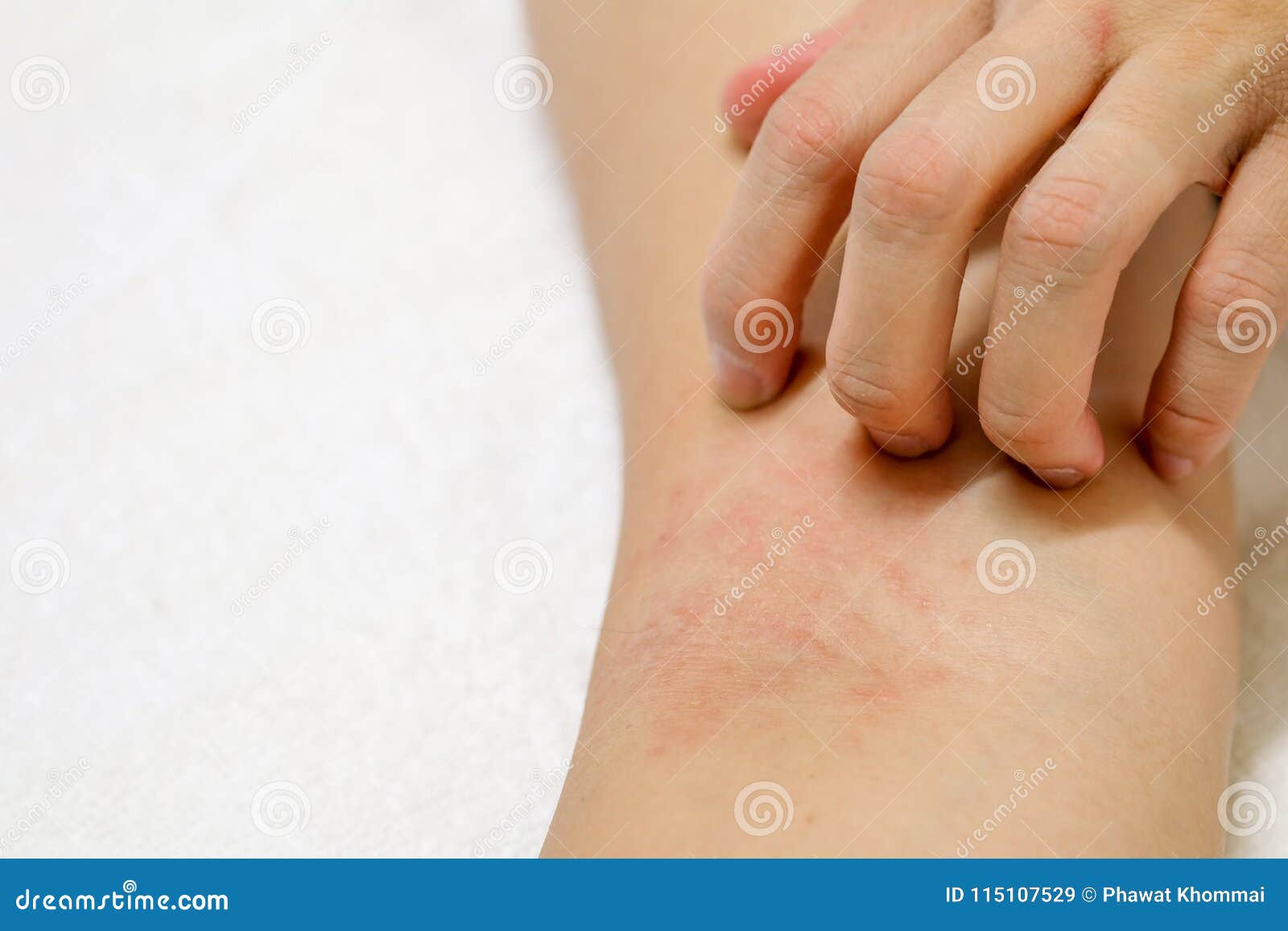
Lichen planus is a common inflammatory skin condition. It causes swelling, discoloration of the skin, and bumps. It can affect any part of the body, including the mouth and scalp, but some people first notice the rash on their wrists or hands.
Find out all there is to know about lichen planus here.
Cellulitis is a bacterial infection of the skin’s deeper layers. If bacteria enter the skin, it can cause cellulitis.
A range of diseases or injuries can allow bacteria to penetrate the skin. A person can get cellulitis even after minor injuries, such as a cut from a razor or a bee sting.
Cellulitis may resemble a rash because it looks swollen and discolored, but it is a dangerous infection that can spread quickly.
Find out more about cellulitis here.
Treatment depends on the cause of the rash. It is usually safe to treat minor conditions, such as contact dermatitis and eczema, at home. The most common treatments include:
- steroid creams
- calamine lotion
- colloidal oatmeal
- moisturizers
- reducing sun exposure in cases of sunburn
- antifungal creams for fungal infections.

It is not possible to prevent all rashes. However, below are some strategies that may help:
- Use fragrance-free moisturizers to reduce the risk of irritation and allergic reactions.
- If a person has eczema, use a formulated cream, especially after washing hands.
- Wear gloves when working in the yard or using irritating chemicals.
- Avoid using medications, including medicated creams, unless necessary. This can reduce the risk of a medication-induced allergic reaction.
People should consult a doctor regarding any rash that does not go away on its own with home treatment. They should also seek medical attention if a rash starts spreading.
A person should call a healthcare professional immediately if:
- they have a fever and rash, or the rash shows signs of infection such as pus or oozing
- the rash is painful but not itchy
- the skin is very swollen
- they have other symptoms, such as symptoms of a cold or the flu
- a rash appears all over the body, especially after an insect sting or taking medication
- a person has a rash and has trouble breathing
Various substances, conditions, and infections can cause rashes on the hands.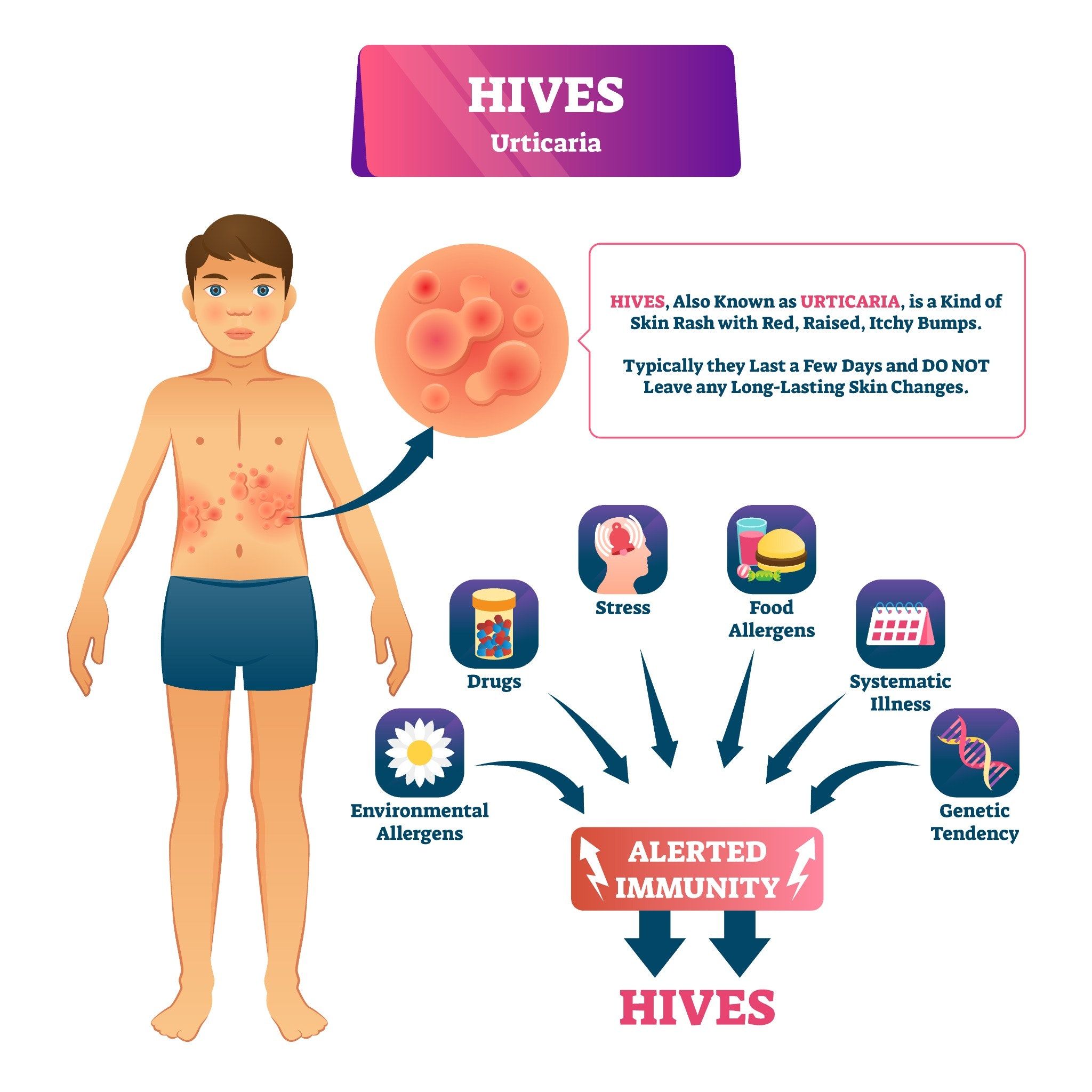
Most rashes are not serious and will go away independently, even without treatment. If a rash hurts, appears suddenly, or does not go away, it may indicate a more serious problem.
Prompt medical treatment may ease the pain and treat the rash.
Causes and when to speak with a doctor
Hand rashes can result from allergic reactions, exposure to irritants, and sunburn. Health conditions, such as psoriasis and eczema, can also cause hand rashes. Treatment will depend on the cause.
In this article, we look at the possible causes of a rash on a person’s hands and when to seek medical help.
Below are images of different rashes on the hands from a variety of causes.
Contact dermatitis is a condition that causes changes in skin color, itching, and irritation. Irritant contact dermatitis results from direct exposure to substances and accounts for around 80% of dermatitis cases.
These substances directly affect the skin and may cause rashes on the hands if this is the site of exposure.
Common skin irritants include:
- hand soaps
- rubber or latex gloves
- nickel and gold jewelry
- citrus and other natural acids
Contact dermatitis usually goes away once people remove the irritant.
Discover some triggers of contact dermatitis in this article.
Several substances can cause minor allergic reactions on the skin. These substances may affect the hands when a person is gardening, using a new lotion, or having exposure to a chemical with which they have an allergy.
In allergic contact dermatitis, the immune system overreacts following contact with these substances, causing a rash, swelling, and irritation. This differs from irritant contact dermatitis, where the substances themselves cause symptoms.
It is possible to treat many minor allergic reactions at home. Learn how here.
Anaphylaxis is a severe and potentially life threatening allergic reaction that causes the body’s immune system to react aggressively to a substance. It sometimes begins with a slightly swollen rash similar to hives.
It sometimes begins with a slightly swollen rash similar to hives.
If the rash spreads quickly, it can lead to more severe symptoms, such as a swollen throat and trouble breathing.
A person who suddenly develops a rash following a sting, new medication, or exposure to another new substance should immediately contact a healthcare professional.
Anaphylaxis is a life threatening condition. Learn more here.
Hives often appear as raised, dumpy rashes. The bumps are itchy and may appear lighter when someone presses on them. The condition can result from irritant and allergen exposure, underlying health conditions, and other physical triggers.
Hives can be acute or chronic, and nearly 20% of people will experience the condition at some time in their lives. The medical term for hives is urticaria.
Find out what causes hives and how to treat them.
Eczema, sometimes called atopic dermatitis, is a chronic skin condition. It causes scaly patches on the skin that may be darker or lighter than the rest of the skin.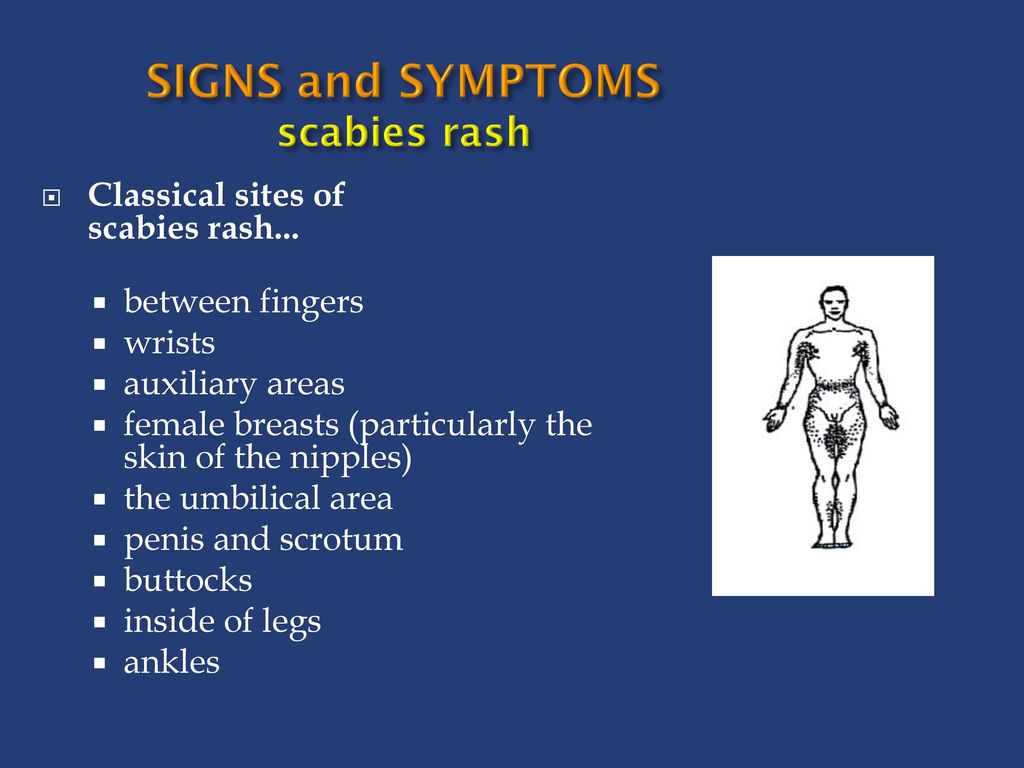 The patches may be all over the body or just in one place, such as the hands.
The patches may be all over the body or just in one place, such as the hands.
The rash often itches and may worsen when the skin is dry or during cold or dry weather. Eczema is more common in children than in adults. After childhood, eczema typically goes away by itself, but many individuals can have the condition in adulthood.
There is a variety of eczema types. Learn more here.
Psoriasis is an autoimmune disease that causes an overgrowth of skin cells. This can cause rashes, inflammation, and raised, scaly, patches of skin known as plaques. The condition can occur in any part of the body.
Psoriasis tends to appear pink or red on those with light or fair skin tones, with scales appearing silvery-white. On medium skin tones, it can appear salmon-colored and feature silvery-white scales. On darker skin tones, psoriasis could look violet with gray scales or appear dark brown and difficult to see.
Psoriasis on the hands may also affect the nails. People with the condition on their hands may develop the rash elsewhere, such as on the scalp.
There is no cure for psoriasis, but some medications can help manage the condition.
More information on psoriasis is available here.
Exposure to sunlight can cause sunburn on any part of the body. Clothing rarely covers the hands, so it is important that people remember to apply sun cream to the back of their hands, fingers, and wrists when applying to the rest of the body.
Sunburn may hurt at first and then begin itching. The skin may look dry, blister, or peel. Sunburn can affect all people, although those with lighter skin have a higher risk of burning.
Find out how sunburn affects dark skin here.
Several genetic conditions can cause the skin on their hands to peel continuously. This peeling will often be painless, but it may result in swelling, skin discoloration, and localized discomfort.
The peeling may worsen during the summer or after frequent handwashing or exposure to water.
Learn more about peeling skin here.
Tinea manuum is a type of fungal infection of the hands, similar to athlete’s foot. It usually causes a rash with a raised border.
It usually causes a rash with a raised border.
A person may contract the infection from a person, animal, or soil with tinea manuum or from touching the feet of someone with athlete’s foot. The rash is usually very itchy and can cause the nails to discolor or look misshapen.
More information about tinea manuum is available here.
Lichen planus is a common inflammatory skin condition. It causes swelling, discoloration of the skin, and bumps. It can affect any part of the body, including the mouth and scalp, but some people first notice the rash on their wrists or hands.
Find out all there is to know about lichen planus here.
Cellulitis is a bacterial infection of the skin’s deeper layers. If bacteria enter the skin, it can cause cellulitis.
A range of diseases or injuries can allow bacteria to penetrate the skin. A person can get cellulitis even after minor injuries, such as a cut from a razor or a bee sting.
Cellulitis may resemble a rash because it looks swollen and discolored, but it is a dangerous infection that can spread quickly.
Find out more about cellulitis here.
Treatment depends on the cause of the rash. It is usually safe to treat minor conditions, such as contact dermatitis and eczema, at home. The most common treatments include:
- steroid creams
- calamine lotion
- colloidal oatmeal
- moisturizers
- reducing sun exposure in cases of sunburn
- antifungal creams for fungal infections.
It is not possible to prevent all rashes. However, below are some strategies that may help:
- Use fragrance-free moisturizers to reduce the risk of irritation and allergic reactions.
- If a person has eczema, use a formulated cream, especially after washing hands.
- Wear gloves when working in the yard or using irritating chemicals.
- Avoid using medications, including medicated creams, unless necessary. This can reduce the risk of a medication-induced allergic reaction.
People should consult a doctor regarding any rash that does not go away on its own with home treatment. They should also seek medical attention if a rash starts spreading.
They should also seek medical attention if a rash starts spreading.
A person should call a healthcare professional immediately if:
- they have a fever and rash, or the rash shows signs of infection such as pus or oozing
- the rash is painful but not itchy
- the skin is very swollen
- they have other symptoms, such as symptoms of a cold or the flu
- a rash appears all over the body, especially after an insect sting or taking medication
- a person has a rash and has trouble breathing
Various substances, conditions, and infections can cause rashes on the hands.
Most rashes are not serious and will go away independently, even without treatment. If a rash hurts, appears suddenly, or does not go away, it may indicate a more serious problem.
Prompt medical treatment may ease the pain and treat the rash.
Fungus on the feet – prevention and effective treatment
Epidermophytosis of the feet is a group of fungal diseases that have a common localization and similar clinical manifestations. Very common and affect people of any age (rarely children) prone to chronic relapsing course.
Very common and affect people of any age (rarely children) prone to chronic relapsing course.
Infection occurs in baths, showers, on beaches, gyms, when using someone else’s shoes and other household items contaminated with fungal elements.
In the pathogenesis of the disease, the anatomical and physiological features of the skin of the feet, increased sweating, changes in the chemistry of sweat, metabolic and endocrine abnormalities, injuries of the lower extremities, and vegetative dystonia are of great importance. Pathogens can be in a saprophytic state for a long time without causing active clinical manifestations. Athlete’s foot has several clinical forms, each of which can be combined with nail lesions.
Symptoms and course
The process most often begins in the interdigital spaces, mainly between the most closely adjacent 4th and 5th fingers. When you feel a slight itch at the bottom of the interdigital fold, a strip of swollen and slightly flaky epidermis appears. After 2-3 days, a small crack appears here, releasing a small amount of serous fluid. Sometimes the stratum corneum falls off, exposing a pink-red surface. The disease, gradually progressing, can spread to all interdigital folds, the plantar surface of the fingers and adjacent parts of the foot itself. The serous fluid seeping to the surface serves as an excellent nutrient material for the further reproduction of fungi.
After 2-3 days, a small crack appears here, releasing a small amount of serous fluid. Sometimes the stratum corneum falls off, exposing a pink-red surface. The disease, gradually progressing, can spread to all interdigital folds, the plantar surface of the fingers and adjacent parts of the foot itself. The serous fluid seeping to the surface serves as an excellent nutrient material for the further reproduction of fungi.
When fungi enter through the disturbed stratum corneum into the deeper parts of the epidermis, the process is complicated by an eczematous reaction. Numerous, strongly itchy, clear fluid-filled blisters appear, which merge and erode in places, leaving weeping areas.
The process can move to the back surface of the foot and fingers, the sole, capturing its arch to the very heel. The disease, then weakening, then again intensifying, without proper treatment and care, can drag on for many years. Often, this is accompanied by a complication of a secondary pyogenic infection: the transparent contents of the vesicles become purulent, the inflammatory redness intensifies and spreads beyond the boundaries of the lesion, the foot becomes edematous, the patient’s movements are difficult or impossible due to severe pain; subsequent complications may develop in the form of lymphangitis, lymphadenitis, erysipelas, etc.
In some cases, epidermophytosis on the soles is expressed by the appearance on the initially unchanged skin of separate groups of itchy, deeply located, dense to the touch blisters and blisters with transparent or slightly cloudy contents. After their spontaneous opening, the cover of the bubbles disappears, remaining in the form of a corolla only along the edges of the lesion; the central parts have a smooth, pink-red color, slightly flaky, less often – a weeping surface; often new bubbles appear on it. Due to their merger, the lesion expands and can capture significant areas of the soles.
The absorption of allergens (fungi and their toxins) is a sensitizing factor for the whole organism, increases the sensitivity of the skin, and an allergic rash may appear on it. It is more often observed on the hands (palms). Sharply limited erythematous discs are formed, dotted with a large number of small bubbles with transparent contents, which burst, exposing an erosive, weeping surface surrounded by a widening rim of swollen and exfoliating epidermis. Fungi are not usually found in these lesions.
Fungi are not usually found in these lesions.
Epidermophytosis of the feet begins mainly in the summer. Increased sweating, insufficient drying of the interdigital spaces after bathing contribute to the introduction of the fungus.
The defeat of the nails with mycosis of the feet is observed mainly on the 1st and 5th fingers, usually starting from the free edge. The nail is thickened, has a yellowish color and a jagged edge. Gradually, more or less pronounced subungual hyperkeratosis develops.
Treatment
Particular attention should be paid to the careful processing of lesions.
The patient should take daily warm foot baths with potassium permanganate. In this case, it is necessary to remove the crusts, open the blisters, cut off the fringe along the edges of the erosion, as well as the covers of festering blisters. After the bath, wet-drying dressings or lotions are applied with an aqueous solution of copper sulfate (0.1%) and zinc (0. 4%) or with a 1% aqueous solution of resorcinol. After wetting stops, dermozolon, mycosolone, and then alcoholic fungicidal solutions, Castellani paint, and, finally, if necessary, fungicidal pastes and ointments, are applied.
4%) or with a 1% aqueous solution of resorcinol. After wetting stops, dermozolon, mycosolone, and then alcoholic fungicidal solutions, Castellani paint, and, finally, if necessary, fungicidal pastes and ointments, are applied.
The effectiveness of treatment depends not so much on the choice of a pharmacological drug, but on their correct, consistent use in accordance with the nature of the inflammatory reaction.
Fungicidal treatment is carried out until the test results for fungi are negative.
Extremely important is the anti-relapse treatment carried out within a month after the elimination of the lesions – wiping the skin of the feet with 2% salicylic or 1% thymol alcohol and dusting with 10% boric powder. For the same purpose, it is necessary to thoroughly wipe the inner surface of the shoe with a formaldehyde solution, wrap it for 2 days in an airtight fabric, then ventilate and dry, and socks and stockings for 10 minutes. boil.
With the complication of athlete’s foot with pyococcal infection, antibiotics are prescribed – methicillin, cephaloridine, oleandomycin, metacycline, erythromycin. The patient must comply with bed rest.
The patient must comply with bed rest.
Prophylaxis
Provides, firstly, disinfection of floors, wooden flooring, benches, basins, gangs in baths, showers, pools, as well as disinfection of impersonal shoes; secondly, regular examinations of attendants and persons involved in swimming pools in order to identify patients with epidermophytosis and treat them early; thirdly, carrying out sanitary and educational work. The population needs to be explained the rules for personal prevention of epidermophytosis: wash your feet daily at night (preferably with cold water and laundry soap), wipe them thoroughly; at least every other day, change socks and stockings; do not use someone else’s shoes; have your own rubber sandals or slippers for the bath, shower, pool.
To harden the skin of the soles, it is recommended to walk barefoot on sand, grass in the hot season.
causes and how to get rid of it? ✓ Author’s articles of the Clinic of Podology Poljot in Moscow
Itching between the toes may indicate the development of various diseases: fungus, eczema, psoriasis, dermatitis, allergies to materials that make up shoes or socks.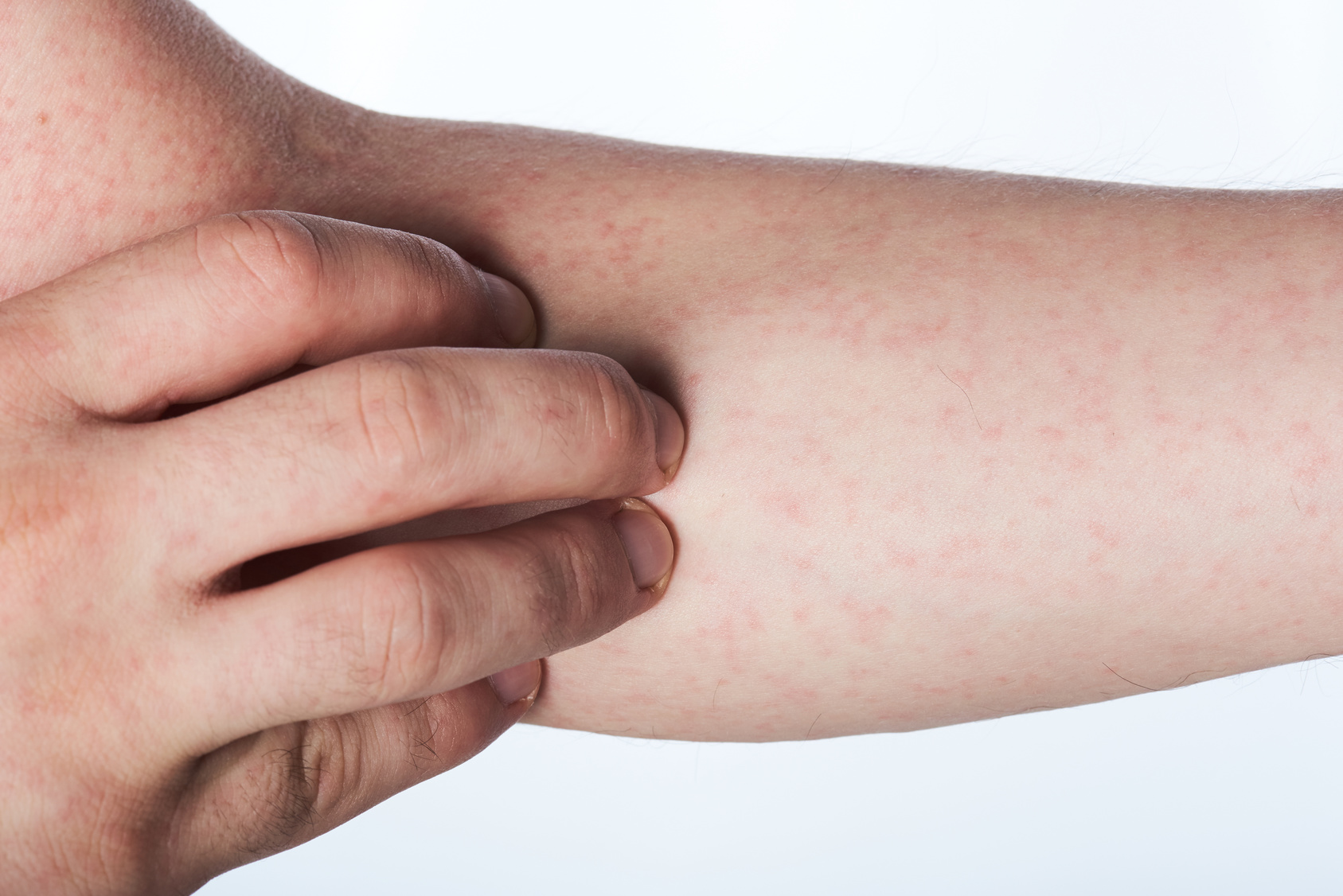 When this symptom appears, you should not resort to self-medication and traditional medicine, but it is better to immediately contact an experienced dermatologist until the disease has passed a chronic or acute form.
When this symptom appears, you should not resort to self-medication and traditional medicine, but it is better to immediately contact an experienced dermatologist until the disease has passed a chronic or acute form.
Diagnosis and treatment
During the appointment, the dermatologist conducts a visual examination of the skin of the legs, finds out the time when the discomfort began, and collects data on the patient’s lifestyle. To exclude other pathologies and accurately determine the diagnosis, a number of clinical tests are prescribed:
- scraping from the nail plates and skin of the toes;
- blood chemistry;
- analysis of feces for the presence of helminths;
- analysis for immunoglobulins, thyroid hormones;
- application tests.
If necessary, the patient is referred for a consultation with a gastroenterologist to rule out eczema.
The main cause of itching between the toes is a fungal infection. With mycosis, discomfort is felt more strongly after water procedures. If scraping from the nails and skin of the legs showed the presence of fungal spores, then complex antimycotic therapy is prescribed, taking into account the age and condition of the patient. In the absence of timely treatment, the fungus captures the nails, causing a change in their color, delamination and increased fragility. In severe cases, mycosis leads to flaking of the nail plates, which is accompanied by severe pain during walking and can be complicated by infection of the soft tissues of the toes.
With mycosis, discomfort is felt more strongly after water procedures. If scraping from the nails and skin of the legs showed the presence of fungal spores, then complex antimycotic therapy is prescribed, taking into account the age and condition of the patient. In the absence of timely treatment, the fungus captures the nails, causing a change in their color, delamination and increased fragility. In severe cases, mycosis leads to flaking of the nail plates, which is accompanied by severe pain during walking and can be complicated by infection of the soft tissues of the toes.
Prevention
To avoid itching of the skin between the toes, you should follow the rules of personal hygiene:
- do pedicure regularly;
- wash your feet daily with antibacterial soap;
- when visiting swimming pools, baths, water parks, use individual hygiene products, personal shoes and a towel;
- wear comfortable shoes in size, excluding rubbing of the skin of the legs;
- use cotton socks.

With increased sweating of the feet, it is recommended to use antifungal powders, protective varnishes and gels for nails.
If you suffer from severe itching between your toes, do not self-medicate! Contact the dermatologists of the Podology Clinic and get rid of discomfort in the legs before complications appear.
The author of the article: Poletskaya Maria Nikolaevna
Read more
This entry appears in sections
Psoriasis
Treatment of hyperhidrosis
PACT therapy
Foot fungus (foot fungus)
Interdigital cracks
Mycosis of the skin
Atopic dermatitis
Microscopic studies
Eczema
See all services
Ask a Question
Ask a Question
Return to list
Online appointment booking with a specialist
For technical reasons, online payment for orders is temporarily unavailable, and prices on the site may be
not of current interest.


